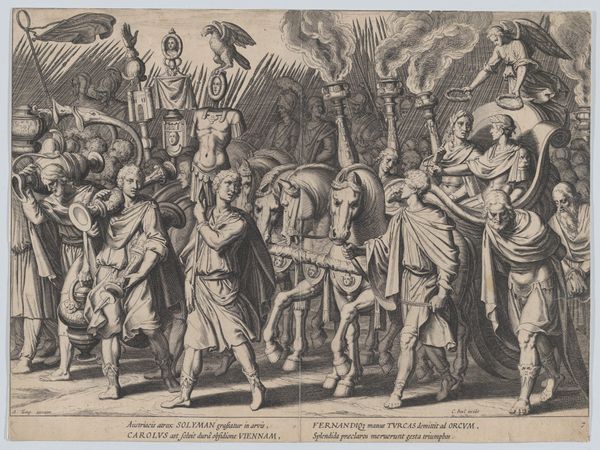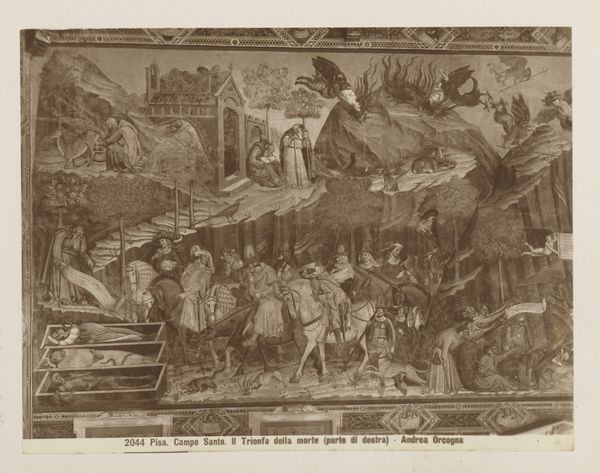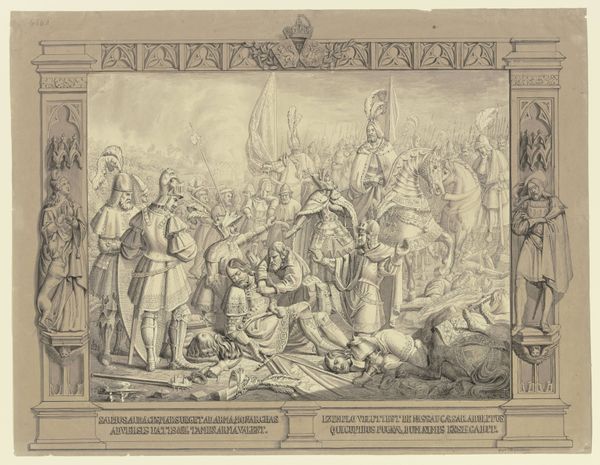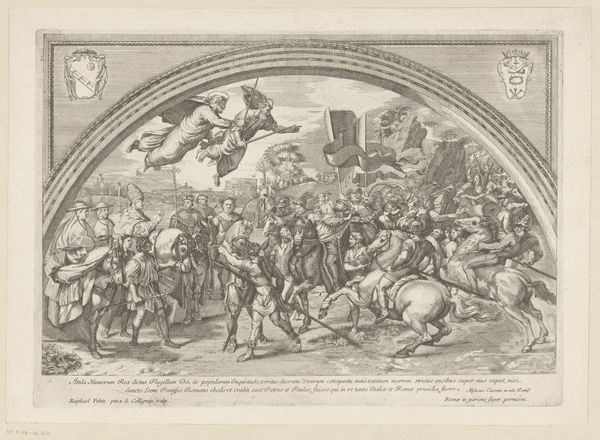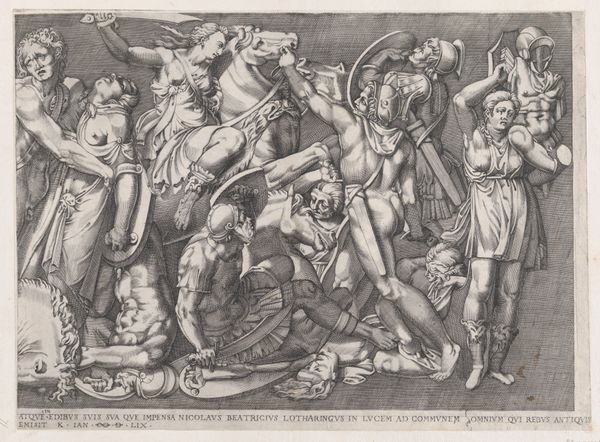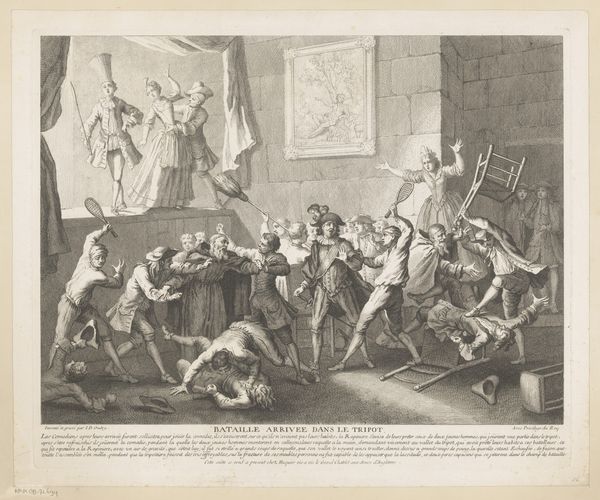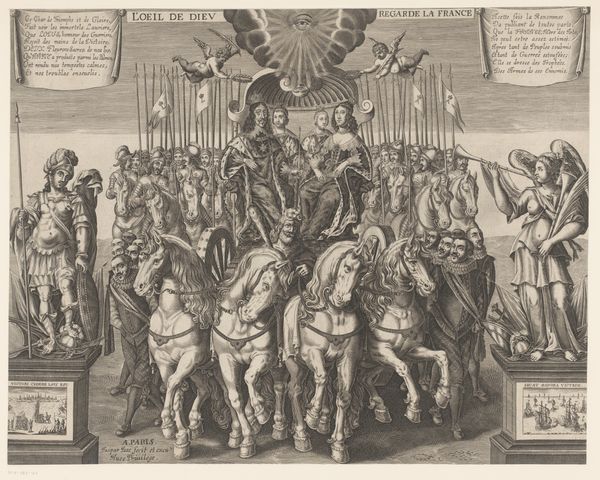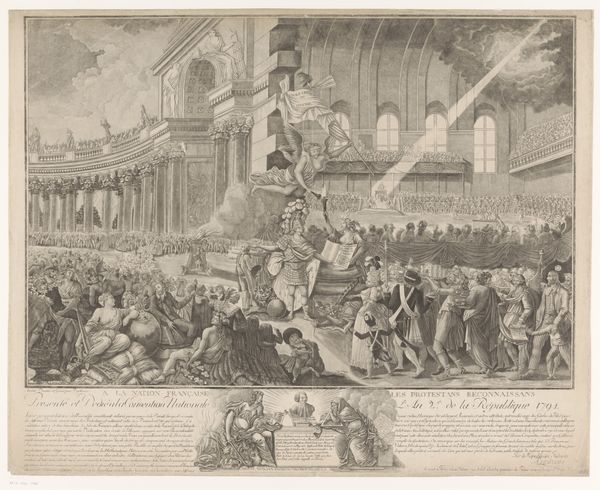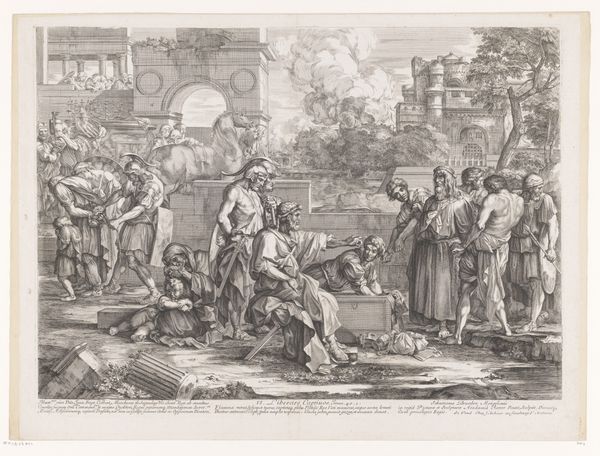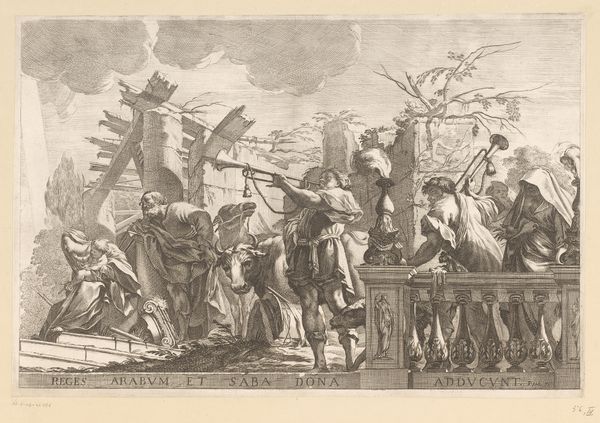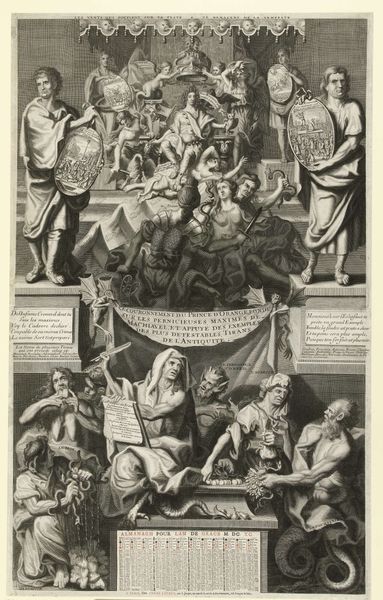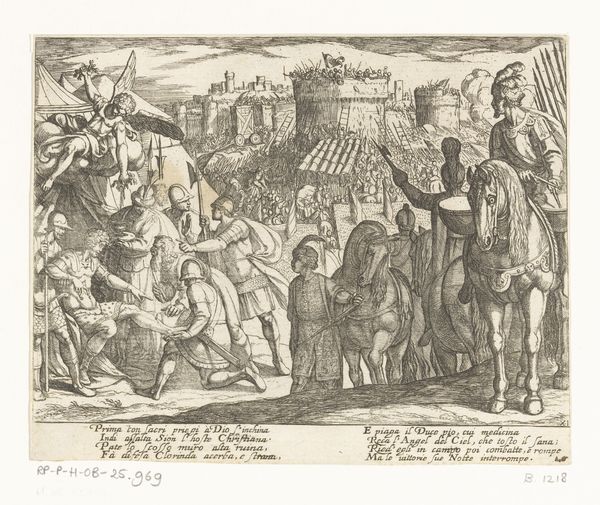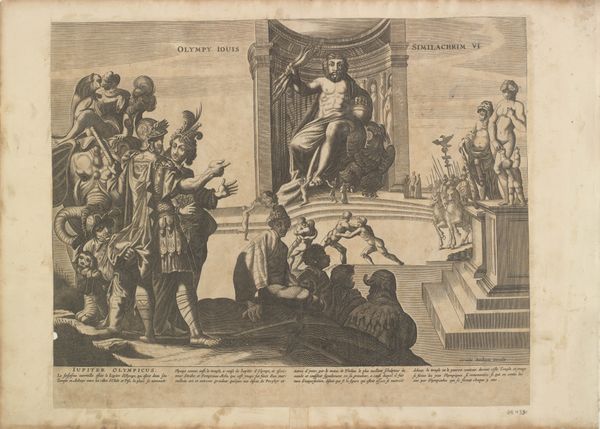
print, engraving
#
narrative-art
#
baroque
# print
#
figuration
#
line
#
history-painting
#
engraving
Dimensions: height 200 mm, width 258 mm
Copyright: Rijks Museum: Open Domain
Abraham Bosse's engraving, "Aftocht der Jansenisten," made in 1653, presents a visually arresting scene of religious and political conflict. The composition is dense, a flurry of figures arranged in a theatrical space. The lines are meticulously etched, creating a textured surface that animates the scene with a palpable tension. The engraving's structure pits the Pope and the King against the Jansenists. Note how Bosse uses the visual weight of the figures to convey power. The Pope, holding a cross, and the King, are centrally located and elevated, while the Jansenists are depicted in disarray, some even trampled underfoot. This arrangement isn't just a depiction of an event, it’s a structured argument about authority and religious legitimacy. Bosse employs a clear visual rhetoric, using the language of bodies and space to communicate a specific ideological position. The formal elements here – the precise lines, the careful arrangement of figures – serve to reinforce a particular reading of history. This artwork functions as a form of propaganda, using its visual language to assert dominance and suppress dissent.
Comments
No comments
Be the first to comment and join the conversation on the ultimate creative platform.
